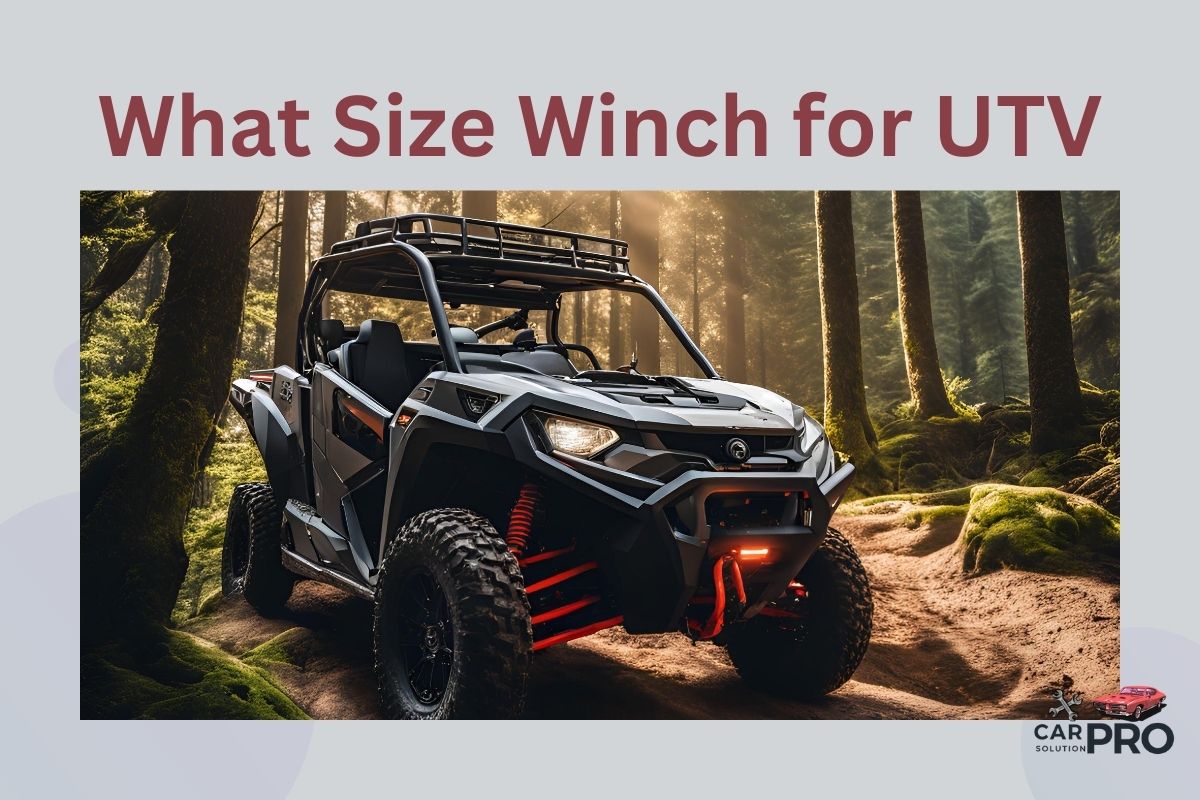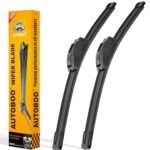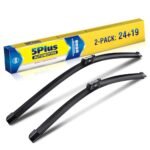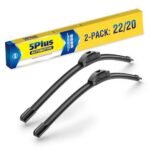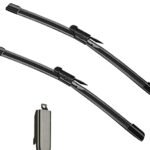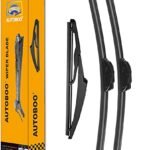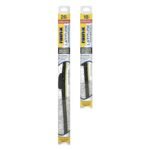Picking the right winch for your UTV can make a big difference when you’re out on the trails. A good winch can get you unstuck from mud, sand, or snow. It can also help pull heavy loads.
For most UTVs, a winch with a 4,000 to 4,500 pound capacity is ideal. This size works well for two-seat UTVs. Bigger UTVs that seat four may need a 5,500 pound winch. The winch should be strong enough to pull 1.5 times the weight of your UTV.
Winch size matters a lot. Too small, and it might not be able to pull your UTV out of tough spots. Too big, and you’re carrying extra weight you don’t need. The right size winch keeps you safe and gets the job done.
Key Takeaways
- UTV winch size depends on the vehicle’s weight and intended use
- A 4,000 to 4,500 pound capacity winch suits most two-seat UTVs
- Proper winch sizing ensures safety and effectiveness in off-road situations
Understanding UTV Winch Ratings
Winch ratings are key for choosing the right UTV winch. They tell you how much weight a winch can pull safely. Knowing your UTV’s weight is also crucial for picking the right winch size.
Winch Capacity Basics
Winch capacity is the maximum weight a winch can pull. It’s usually measured in pounds. Most UTV winches range from 2000 to 6000 pounds of pulling power.
A winch’s rated capacity is based on the bottom layer of cable on the drum. As more cable wraps around, the capacity drops. Each layer can reduce pulling power by about 10%.
For safety, experts suggest choosing a winch with 1.5 times your UTV’s weight. This extra power helps when your UTV is stuck in mud or on steep slopes.
Determining UTV Weight
Knowing your UTV’s weight is vital for picking the right winch. Most UTVs weigh between 1000 to 2000 pounds.
To find your UTV’s exact weight:
- Check the owner’s manual
- Look for a sticker on the frame
- Use a vehicle scale at a truck stop
Remember to add the weight of gear, passengers, and cargo to your UTV’s base weight. This total is called the Gross Vehicle Weight Rating (GVWR).
For example, a UTV weighing 1000 pounds might need a 4000-pound winch. This accounts for the UTV’s weight plus extra force needed in tough situations.
Choosing the Right Winch Size
Selecting the proper winch size for your UTV is crucial for safe and effective recovery. The right capacity depends on your vehicle’s weight and potential stuck situations. Let’s explore the key factors to consider.
Minimum Winch Capacity Recommendations
For UTVs, experts suggest specific winch capacities based on vehicle weight. Two-seat UTVs typically need a 3,500 to 4,500 lb capacity winch. This range suits vehicles weighing 1,500 to 2,500 lbs.
For heavier four-seat UTVs, a 4,500 to 5,500 lb capacity winch is recommended. This handles UTVs over 2,500 lbs.
A simple guideline is to choose a winch with a capacity of 1.5 times your UTV’s weight. This ensures enough power for most situations.
Considering Additional Weight
When selecting a winch, factor in extra weight beyond the UTV itself. Gear, passengers, and accessories can add significant pounds.
Mud, deep water, or steep inclines increase the force needed to free a stuck vehicle. In these cases, a higher capacity winch is beneficial.
For UTVs weighing 700-1000 lbs, a 4000 lb winch is suggested. This accounts for tough situations where more pulling power is needed.
Consider future upgrades too. If planning to add heavy accessories later, opt for a slightly larger winch now to avoid replacement later.
Types of Winches for UTVs
UTVs can use two main types of winches: electric and hydraulic. Each has distinct features and benefits for different situations.
Electric Winches
Electric winches are popular for UTVs. They run on the vehicle’s battery power. These winches are easy to install and use.
Most electric winches for UTVs have a pulling capacity between 2,500 and 6,000 pounds. This range suits most UTV weights and stuck situations.
Electric winches have a motor, gear train, and drum with cable. The motor turns the drum to pull in the cable. They often come with a remote control for safe operation from a distance.
These winches work well for short, frequent pulls. They’re good for trail riding and general use. But they can overheat with long, hard pulls.
Hydraulic Winches
Hydraulic winches use the UTV’s power steering pump. They’re less common but very powerful.
These winches can pull for longer without overheating. They work well for heavy-duty tasks and commercial use.
Hydraulic winches are often stronger than electric ones. They can have higher pulling capacities, sometimes over 10,000 pounds.
They’re more complex to install. They need to connect to the UTV’s hydraulic system. This makes them costlier and harder to set up than electric winches.
Hydraulic winches perform better in wet conditions. They’re sealed, so water doesn’t affect them as much as electric winches.
Key Features to Consider
When choosing a UTV winch, several important factors can affect performance and reliability. Pay attention to these key features to select the best winch for your needs.
Synthetic Rope vs Steel Cable
Winch rope material is a crucial decision. Synthetic rope is lighter and safer to handle. It doesn’t store energy like steel cable, reducing the risk of injury if it breaks.
Steel cable is more durable and resistant to abrasion. It’s a good choice for rough terrain with rocks or sharp edges.
Synthetic rope is easier to spool and less likely to kink. It floats on water, which can be helpful in certain situations.
Steel cable conducts electricity, posing a risk near power lines. It’s also heavier, which can affect your UTV’s weight distribution.
Waterproofing and Durability
A winch’s ability to withstand harsh conditions is vital. Look for winches with high IP (Ingress Protection) ratings.
An IP68 rating indicates the winch can handle submersion in water. This is important for crossing streams or dealing with deep mud.
Sealed motors and weatherproof construction protect internal components. This extends the winch’s lifespan and maintains performance.
Corrosion-resistant materials like stainless steel hardware are beneficial. They prevent rust and deterioration over time.
Some winches have additional protective features like covers or sealed solenoids. These provide extra defense against the elements.
Motor Types and Power Draw
UTV winches typically use either permanent magnet or series wound motors. Each has its advantages.
Permanent magnet motors are more efficient and draw less power. They’re suitable for occasional use and lighter loads.
Series wound motors offer more power and can handle extended use. They’re better for frequent winching or heavier loads.
Consider your UTV’s electrical system capacity. A powerful winch may require upgrades to your battery or alternator.
Some winches have thermal protection to prevent overheating during long pulls. This feature can save your motor from damage.
Look for winches with low amp draw at rated load. This ensures your UTV’s electrical system can handle the winch’s power needs.
Installation and Safety Tips
Installing a winch on your UTV requires care and attention to detail. Following proper procedures and safety precautions ensures a secure setup and safe usage.
Proper Installation Procedures
Start by choosing a suitable mounting plate for your UTV model. Clean the mounting area thoroughly before beginning installation.
Carefully align the winch with the mounting holes. Use high-quality bolts and lock washers to secure it firmly in place.
Connect the power cables to the battery, ensuring proper polarity. Red goes to positive, black to negative. Use protective coverings on exposed wiring.
Mount the contactor in a dry, accessible location. This component controls power flow to the winch motor.
Install the fairlead on the front of the mounting plate. This guides the cable and prevents damage during winching operations.
Test the winch’s operation before heading out on the trails. Check that it spools in and out smoothly without any binding or unusual noises.
Safety Precautions and Usage
Always wear heavy-duty gloves when handling the winch cable. The wire can develop sharp burrs that can cause injury.
Never wrap the winch cable around an object and hook it back onto itself. This can damage the cable and create a dangerous situation.
Use a tree saver strap when anchoring to trees or other objects. This protects both the anchor point and your winch cable.
Keep bystanders clear of the winch line and UTV during operation. A snapped cable can whip back with tremendous force.
Inspect your winch regularly for signs of wear or damage. Replace frayed cables and damaged components immediately.
When winching, apply steady pressure rather than jerking motions. This reduces stress on the winch and UTV frame.
Always refer to your winch’s manual for specific safety guidelines and weight limits. Never exceed the rated capacity of your winch.
Frequently Asked Questions
Choosing the right winch for a UTV involves several key factors. These include calculating capacity, considering vehicle weight, and understanding the recommended specifications for typical UTVs.
How to calculate the appropriate winch size for a UTV?
To find the right winch size for a UTV, multiply its gross vehicle weight rating (GVWR) by 1.5. This calculation gives a good estimate of the needed pulling power.
For example, if a UTV weighs 1,500 pounds, a winch with a 2,250-pound capacity would be suitable.
What winch capacity is recommended for a typical UTV?
Most UTVs require a winch with a capacity between 3,500 to 4,500 pounds. This range usually provides enough power for most recovery situations.
It’s important to check the specific UTV model’s weight and intended use before selecting a winch.
Can a 2500 lb winch adequately serve UTV towing needs?
A 2500 lb winch can be sufficient for lightweight UTVs or specific tasks. It works well for smaller vehicles or operating a snow plow.
For heavier UTVs or more demanding recovery situations, a higher capacity winch may be necessary.
What factors should be considered when selecting a winch for a UTV?
When choosing a UTV winch, consider the vehicle’s weight, intended use, and terrain. The type of cable (synthetic rope or steel) is also important.
Budget, brand reputation, and additional features like remote control operation can influence the decision.
How does the weight of the UTV affect the winch capacity required?
The UTV’s weight directly impacts the required winch capacity. Heavier vehicles need winches with higher pulling power.
A general rule is to choose a winch with a capacity 1.5 times the UTV’s weight. This ensures enough power for various recovery situations.
What are the advantages of choosing a Warn winch for UTV use?
Warn winches are known for their durability and reliability. They offer a range of models suitable for different UTV sizes and uses.
Many Warn winches come with features like waterproof sealing and strong synthetic ropes, which can be beneficial for UTV owners.
When you purchase a product through Amazon links on carsolutionpro.com, we may earn a small commission at no extra cost to you. This helps support the site and keep our content free. As an Amazon Associate, we earn from qualifying purchases made through our links.
